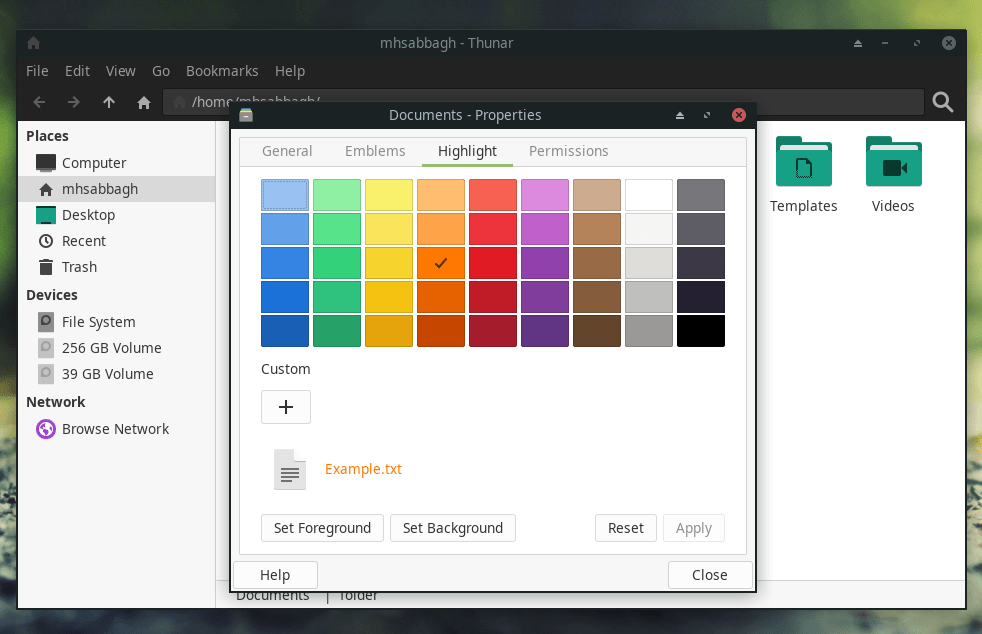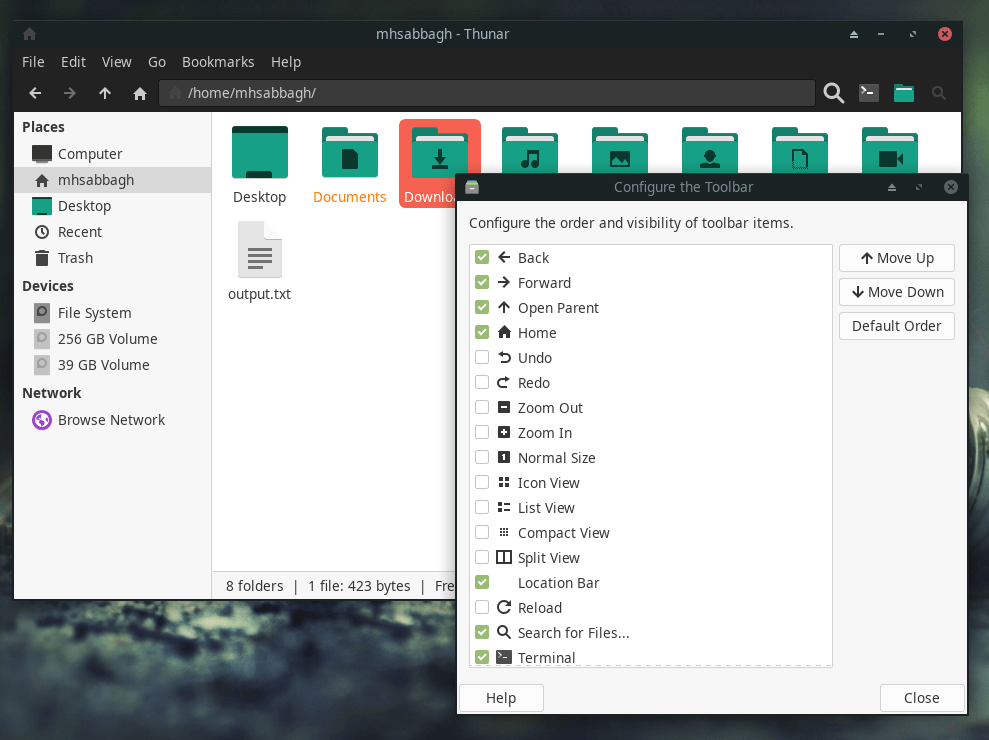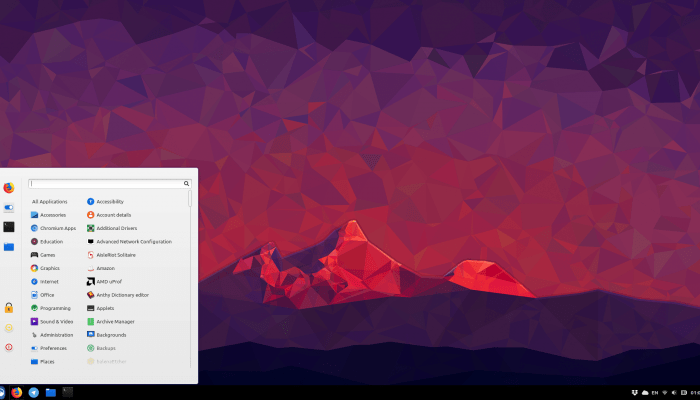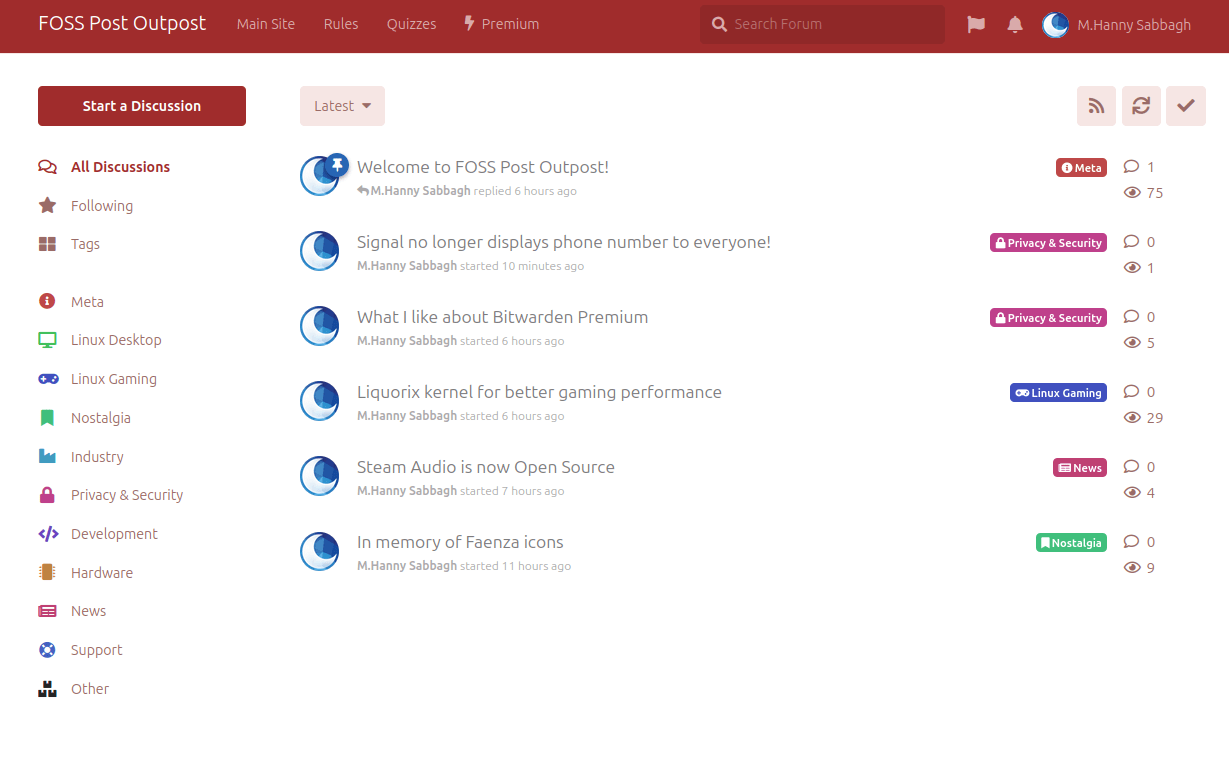Xfce 4.18 was released on December 16, 2022.
The lovely desktop environment has been around for around 25 years now (since 1997!). A lot of Linux and other Unix-like systems users like Xfce for how lightweight and straightforward it is.
It just doesn’t get in the way of the user like some other desktops do. It helps the user to do what he/she wants to do.
Perhaps the consistent user experience and familiar traditional design were the main selling points of this desktop, allowing it to last for more than quarter a century.
In today’s article, we will examine the current state of the Xfce desktop, as well as some important feature highlights in the latest 4.18 release. We will also discuss some possible improvement points in the mouse-driven desktop.
Table of Contents:
File Management
File management in Xfce 4.18 just got to a whole new level. It can perhaps be said that file management with Thunar (the default Xfce file manager), is the most advanced part in the Xfce desktop.
You can now change the foreground and background of any file or folder in the file manager using a special window (from right click menu →Properties):

If you decide to just change the color of the foreground (the text only), then it would look like this:

If you change the background, it would look like this:

This allows you to easily highlight your important files and folders however you like, according to their importance to you.
Indeed, it is a very welcome change.
Additionally, the toolbar of Thunar is now configurable; that is, you can change the visible tools in the toolbar however you like:

One of the best features in the new Xfce, however, is custom actions support in Thunar. You can now define your own custom actions (right click menu/context menu actions) so that they get applied to any file or folder automatically when you click on them:

You can define the custom actions from a special window in Thunar:

An important new feature to highlight in Thunar too is the split view. You can now display multiple folders side by side in the file manager, which would allow you to work on multiple folders together at the same time:

It is also possible to customize the location par, so that it either appears like a full path text:

Or buttons like this:

Even the statusbar in Thunar gained some love; you can now toggle the visibility of some statusbar items if you wish:

Of course, one can’t also forget the fabulous Thunar Bulk Rename tool, which allows the user to change the filenames of any set of files he/she wants, together, in one run.
While this tool is not new by any mean, it makes file management experience in Xfce a very pleasant one, and reliefs the user from having to use extra 3rd-party tools to do such types of jobs when they need to:

Display Settings
Xfce has limited support for fractional scaling, even in its latest 4.18 release:

The desktop would allow you to use values like 0.9 or 0.8 for fractional scaling, but the visual elements on the desktop (including text fonts) would look blurry/fuzzy and not actually rendered as native fractional. See the size difference here in these two images (but you won’t be able to see the fuzziness, because it is related to the monitor size):
Fonts DPI can be changed in Xfce, so it helps a bit, but still not a good experience to use day-by-day:

This happens because sadly GTK, the main UI toolkit in which Xfce is written, does not support fractional scaling on the toolkit level, so the compositor (or the desktop) is left alone to do workarounds.
If you want fractional scaling on Linux, then perhaps KDE is the finest thing you can get.
Additionally, one can notice the absence of red light/night light support in Xfce; it is a feature that replaces part of the blue light emitted by computer monitors with red light, so that working for long hours on computers does not lead you to eyestrain or other health issues.
If you want red light support in Xfce, then you have to use an external software like Redshift.
It could help a lot if the Xfce team implemented this feature in Xfce itself, so that users don’t need to fight a battle with Redshift configuration files in order to be able to use the desktop whilst not harming their eyes at night.
Miscellaneous Improvements
The terminal has a cozy context menu item to export the selected output directly to a file:

This is a very nifty feature, as it helps you save some clicks if you want to save the output of some terminal commands to a file on your computer. You don’t have to open a text editor and copy & paste the contents manually, you just highlight the text and export it directly.
The date widget and time widget on the Xfce panel are now unified:

You can now adjust their settings (such as the display format) from one place:

The appearance settings now tell you what components does the theme you chose has, so that you know whether it will be applied for window controls (Xfwm4) or just window contents (GTK2/GTK3). You can also choose to set a matching theme automatically if there is one:

Talking about areas of improvements, perhaps icon sizes on the Xfce panel could be one of them:

Notice how each different arrow color points to a different icon size. This is because many of these components on the panel are separate widgets and hence, they use different icon sizes, and not the one specified in the Panel Preferences window.
It could be beneficial if Xfce unified the icon sizes, so that they become adjustable in different parts of the panel, just like in Linux Mint’s Cinnamon:

Wayland & GTK4 Support
Xfce still does not support Wayland at the moment.
Developers are eyeing its support in the future, though, and currently working in it. You can follow the “Xfce Wayland Development Roadmap” page on the Xfce Wiki for updates on the progress.
The Xfce team decided to use the same Wayland compositor provided by Sway window manager, Wlroots. They say they do not have enough resources to maintain their own compositor, so they will just use the best available option.
The work is indeed too much; every single Xfce component and every single panel widget need to be changed or tested to work under the new X11-free code, which of course takes a huge time and effort.
Additionally, it’s unclear at the moment if Xfce will transition to GTK4 or not. GTK4 has been around for two years now and GTK5 is on the road, so the team needs to act quickly if they plan to transition, or they will have to skip a GTK version.
The Bottom Line
Xfce is a very functional desktop for Linux and other Unix-like systems, it is enjoyed by many, and won’t be going away any time soon.
Mostly it works just fine, the thing people love about it is that it works just fine for years without a breaking change for the user experience. However, some areas are still in need of improvements like we have seen together.
Sadly, it feels like the development team is overwhelmed with tasks and to-dos. It could help a lot if you can donate to the project or help fix some issues by yourself, if you know how to.
With a B.Sc and M.Sc in Computer Science & Engineering, Hanny brings more than a decade of experience with Linux and open-source software. He has developed Linux distributions, desktop programs, web applications and much more. All of which attracted tens of thousands of users over many years. He additionally maintains other open-source related platforms to promote it in his local communities.
Hanny is the founder of FOSS Post.



